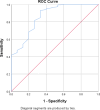Validation of a Nepali version of the questionnaire to assess preventive practices against the COVID-19 pandemic in the general population
- PMID: 39695469
- PMCID: PMC11658262
- DOI: 10.1186/s12889-024-21009-3
Validation of a Nepali version of the questionnaire to assess preventive practices against the COVID-19 pandemic in the general population
Abstract
Background: The new coronavirus disease 2019 (COVID-19), caused by a virus in the coronavirus family called severe acute respiratory syndrome coronavirus 2 (SARS-CoV-2). Due to lack of effective treatment, the major way to breakdown the disease transmission is by application of preventive measures. For this, a preventive practice questionnaire was used to assess the preventive practice during COVID-19. A definite advantage of this questionnaire is its ability to identify individual level preventive practices. The objective of the study was to validate the Nepali version of Questionnaire to assess preventive practices against the COVID-19 pandemic in the General population.
Methods: A web-based descriptive cross-sectional study was conducted from November 2022 to April 2023 using preventive practices against the COVID-19 pandemic questionnaire and was conducted among 351 respondents. The sensitivity and specificity of the questionnaire were calculated for validation. The best cutoff point for the Nepalese version of the questionnaire was identified and the area under the receiver operating characteristic curve (AUC) was calculated.
Results: The overall prevalence of good preventive practices was 90.6%. The best cutoff points for the Nepali version of the questionnaire were 93% sensitivity and 67% specificity, respectively at a cutoff level of 47/48. The area under the curve was 0.859. Thus, the Nepalese version of the questionnaire concerning preventive practices during the COVID-19 pandemic in the general population had an accuracy of 85.9% (95% CI 0.757-0.961, p = 0.001).
Conclusion: The Nepalese version of the questionnaire on preventive practices during the COVID-19 pandemic in the general population can be successfully used as a survey tool. These findings might help to detect appropriate adherence to preventive practices can be achieved in busy outpatient departments. Detecting adherence to preventive practices may help local health authorities and policymakers in identifying specific populations for future awareness campaigns during infectious disease outbreaks.
Keywords: COVID-19; Nepali version; Preventive practice; Questionnaire validation.
© 2024. The Author(s).
Conflict of interest statement
Declarations. Ethical approval and consent to participate: The study was approved by the Institutional Review Committee of Nepalese Army Institute of Health Sciences (Reg.no–670). Informed consent was obtained from all the respondents before their enrollment. Throughout the study, the confidentiality and anonymity of the respondents were rigorously maintained and ensured. Consent for publication: “Validation of a Nepali version of the questionnaire to assess preventive practices against the COVID-19 pandemic in the general population” conducted by Ms. Dipsikha Aryal, Ms. Puspa Acharya, Mr. Niraj Bhattarai and Dr. Roshan Gwachha. We would like to have the manuscript considered for publication in BMC Public Health, as the objective and design of study matches the aim and scope of Journal focusing on Public Health issues. Competing interests: The authors declare no competing interests.
Figures
Similar articles
-
An Online Investigation of Knowledge and Preventive Practices in Regard to COVID-19 in Iran.Health Lit Res Pract. 2021 Jan 11;5(1):e15-e23. doi: 10.3928/24748307-20201130-01. Health Lit Res Pract. 2021. PMID: 33433629 Free PMC article.
-
Use of Rapid Online Surveys to Assess People's Perceptions During Infectious Disease Outbreaks: A Cross-sectional Survey on COVID-19.J Med Internet Res. 2020 Apr 2;22(4):e18790. doi: 10.2196/18790. J Med Internet Res. 2020. PMID: 32240094 Free PMC article.
-
Knowledge, attitudes, practices, and perception of COVID-19 preventive measures among adult residents of Matadi (Democratic Republic of the Congo) after the third epidemic wave.Front Public Health. 2024 Jun 28;12:1363717. doi: 10.3389/fpubh.2024.1363717. eCollection 2024. Front Public Health. 2024. PMID: 39005989 Free PMC article.
-
A Cross-sectional Survey of Public Knowledge and Perspective on Coronavirus Disease, Vaccination, and Related Research in India during the COVID-19 Pandemic.J Assoc Physicians India. 2023 Sep;71(9):19-27. doi: 10.59556/japi.71.0335. J Assoc Physicians India. 2023. PMID: 38700297
-
COVID-19 preventive practices during intrapartum care- adherence and barriers in Ethiopia; a multicenter cross- sectional study.PLoS One. 2021 Nov 18;16(11):e0260270. doi: 10.1371/journal.pone.0260270. eCollection 2021. PLoS One. 2021. PMID: 34793560 Free PMC article.
References
-
- WHO Director-. General’s opening remarks at the media briefing on COVID-19–11 March 2020.
-
- Ministry of Health and Population. Public Health guidelines-Feast-and-Festivals. 2020.
-
- Ministry of Health. and Population. SitRep. 2020.
-
- Ministry of Health. and Population. Guidelines for Geriatric Population. 2020.
-
- Rahman A, Sathi J. em245 e-ISSN: 2516–3507 Citation: Rahman A, Sathi NJ. Knowledge, Attitude, and Preventive Practices toward COVID-19 among Bangladeshi Internet Users. Electron J Gen Med [Internet]. 2020 [cited 2024 Jul 22];2020(5). https://www.ejgm.co.uk/:em245.10.29333/ejgm/8223
Publication types
MeSH terms
LinkOut - more resources
Full Text Sources
Medical
Miscellaneous


